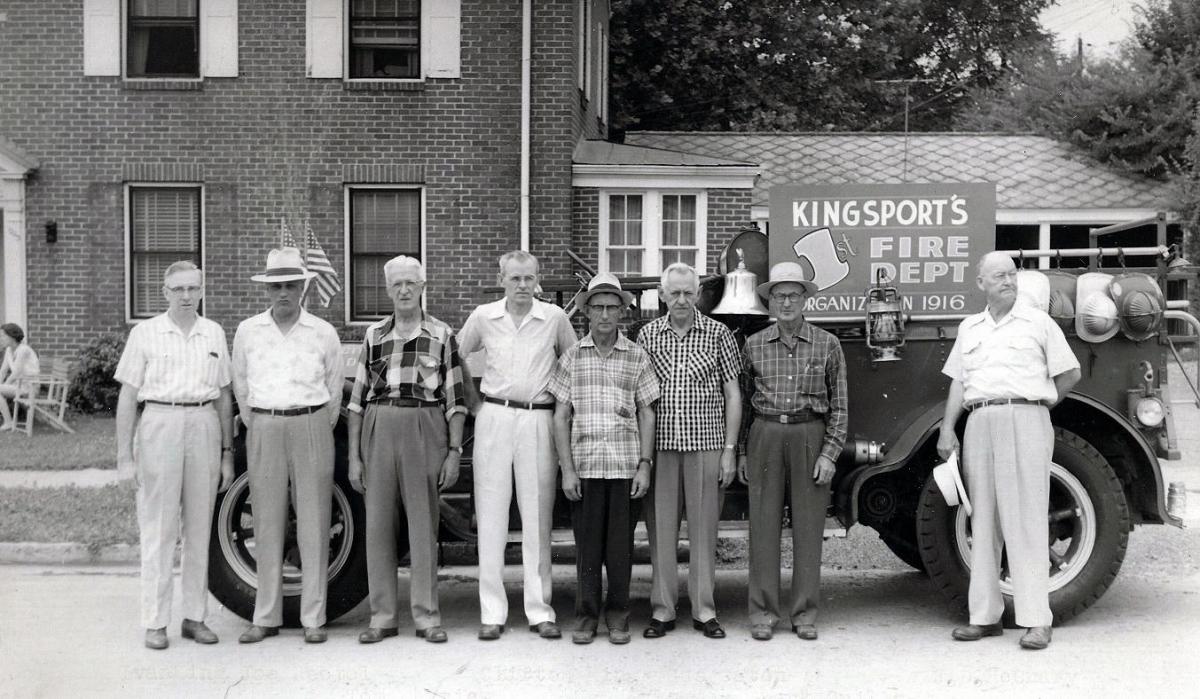For the last three days of this year’s tour we will be based at the Allandale Mansion grounds. Allandale Mansion is located on the western side of Kingsport and is very close to several historic locations. During your visit you may choose to visit Long Island, the Netherland Inn, Rotherwood Mansion, or the site of the Civil War battle of Kingsport. All of these sites are within 2.5 miles of our campground and are easily accessible from Allandale.
You could have set up your camp here on the grounds of Allandale 300 years ago and watch as history paraded by you…
[vc_tabs tabs_position=”left” type=”type2″ interval=”5000″ arrows_size=”small” arrows_position=”middle” indicators_position=”middle”][vc_tab title=”Had you been here in 1700″ tab_id=”1429907996-1-65″]
If you had been here in the early 1700’s, you could have seen the fires and heard the sounds of great Indian nations as they gathered on the end of the Great Long Island for sacred council and treaty meetings. The Great Indian Warpath which was the main trading route for southern and northern Indian tribes ran along Long Island. The western tip of Long Island was held as a sacred spot where tribes met to settle their differences. Here they held their parlays around council fires and smoked the peace pipe. The land is still owned by the Cherokee Nation and can be accessed by crossing a swinging bridge across the Holston River.
For more check out this YouTube video:
Had you been here in 1775, you would have been witness to the start of the great migration to the west as Daniel Boone began to cut his Wilderness Road from Long Island to the Cumberland Gap opening the path for the settlement of Kentucky. On March 30, 1775 Boone’s expedition consisting of 30 men started cutting a road from Long Island to the Cumberland Gap. Over the next 35 years over 300,000 settlers would follow Boone’s Wilderness Road through this area to settle the west. In March this trek will be repeated by an ancestor of one of the men that went along with Daniel Boone. You can learn more about the trip at this website,
Had you been here in 1802, you would have witnessed William King building King’s Port and what became known as the Netherland Inn. King owned salt mines in the Saltville, VA area (an area we rode through on our Sunday rides) and transported the salt by wagons to this spot on the Holston River so it could be further shipped west on flat boats. You can see a replica of the flat boat at the Inn. In 1818, the Inn was bought by Richard Netherland who expanded the building and turned it into an inn and tavern on the Great Old Stage Road, the main road between Lynchburg, Virginia and Knoxville, Tennessee. Over the years you could have visited with three US Presidents: Andrew Jackson, James K. Polk and Andrew Johnson as they interrupted their travels with stays in the Inn. Today the Inn and Museum are open for visitors. More information is available at this website,
visitkingsport.com/visitors/attractions/120-netherland-inn.html
Had you been here in April 1818, you would have seen a man arriving by horseback from Richmond at the forks of the Holston River to see the land he had inherited from his father. Frederick Ross was a young man, 22 years old, who was seeking his fortune after the failure of his family’s Oxford Iron Works. Upon the death of his father, he inherited a large tract of land in Sullivan and Hawkins counties in Tennessee. He was immediately taken by the beauty of east Tennessee and built his mansion named Rotherwood at the confluence of the north and south forks of the Holston River. You could have watched as he built the first bridge across the north fork of the Holston River and you can still see the pilings of that bridge today from the existing highway bridge. You could have seen him planting Mulberry trees to feed the silkworms that would supply his new silk mill. And you could have watched as he built a cotton mill on Big Elm road; we will ride past that site on Monday’s route. In later years Ross became a well known Presbyterian minister. You can still view Rotherwood mansion but it is not open to the public. Be careful as you view the house as it is rumored to be haunted!
The Civil War brought troubled times to east Tennessee where it truly was brother against brother as families were often split in their loyalties. Had you been standing here on the evening of December 12, 1864 you would have first seen a band of 350 Confederates of the 2nd Kentucky Calvary under the command of Colonel Richard C. Morgan pass by after fighting a delaying action just to the west of Rogersville. You could hear them ford the Holston River at the Rotherwood bridge and begin digging in along the bluffs overlooking the river crossing. Hours later you would have witnessed the arrival of 5,000 Federal forces under the command of General George Stoneman as they made their way toward Saltville to destroy the salt works. On the morning of December 13, 1864 you would have heard the scattered musket fire as the Federal troops probed the Confederate defenses. Then you would have seen the Federal 8th Tennessee Cavalry Regiment under the command of Colonel Samuel K. Patton, a native of Kingsport, pull out of the Federal lines and move north along the Holston River and Big Elm Road. Several hours later you would have heard loud musket fire as the Federal forces under Colonel Patton’s command attacked the Confederates from behind and the remaining Federal forces under General Stoneman’s command cross the river in a frontal attack on the Confederate forces. The battle was over in a matter of minutes and resulted in 18 Confederate and 5 Union dead and the opening of the path for Stoneman’s raid into southwest Virginia. There are markings of the battle and a monument to the Confederate forces across the bridge on Netherland Inn Road. This is also a good viewing point of the Rotherwood Mansion.
www.waymarking.com/waymarks/WMKWW2_Civil_War_Battle_of_Kingsport_Tennessee
Had you been here in 1942, you would have experienced traffic backed up as far as you can see in every direction as 15,000 to 18,000 workers came to the site of Holston Army Ammunition Plant (HAAP) located directly across Highway 11 W from you. The plant was built for the Army under the direction of Eastman Kodak to produce high explosives for use in World War II. The German U-boats were severely limiting the flow of supplies from America to England to some extent because the existing anti-submarine depth charges were not strong enough to crush the hulls of the German boats. HAAP was built to manufacture a high explosive known as RDX that could be combined with TNT resulting in an explosive depth charge that would be fatal to u-boats. The first RDX was produced in May of 1943. Almost immediately the u-boat loss rate doubled, the Battle of the Atlantic was won by the Allies and the supplies for the Normandy invasion flowed freely to England. Most people would say a key part of winning WW II was the plant you can see from your campground.
Had you been here in 1949, you would have seen a strange sight as Harvey Brooks moved his herds of Black Angus cattle and Tennessee Walking Horses here because his farm upstream on the Holston was being flooded by the building of a TVA dam. A few years later another strange site would be the moving of the portico, columns and front staircase (that now form the grand entry into the mansion) up the two lane road from Knoxville that had been used since the early 1800’s. From the early 1950’s until 1969 Allandale was the home to Ruth and Harvey Brooks and their nationally recognized herd of Black Angus cattle. Upon his death in 1969, Mr. Brooks left the house, 25 acres, several outbuildings and two man-made ponds to the city of Kingsport. The will specified that the house must be maintained in the same manner as when its former owners were alive and must be devoted to public use of citizens of the city and region. It is now operated as a city park and we hope you take the time to tour the mansion during your stay.
As you camp and enjoy your rides the people comprising the long history of this area and the City of Kingsport and its current residents hope you have a most pleasant and enjoyable visit.
ABOUT THE AUTHOR
“I live in the Kingsport, Tennessee area and am interested in participating in the 2015 Bike Virginia ride. [This] represents my initial and feeble attempt to give some history of the area around the Bike Virginia Headquarters in Kingsport. I can see it being included as a handout in the registration packet, available as a handout with more information and directions at the Headquarters info table or maybe some portion included on your website. Hope it is of some interest. “
—Mike Harvey, age 68


